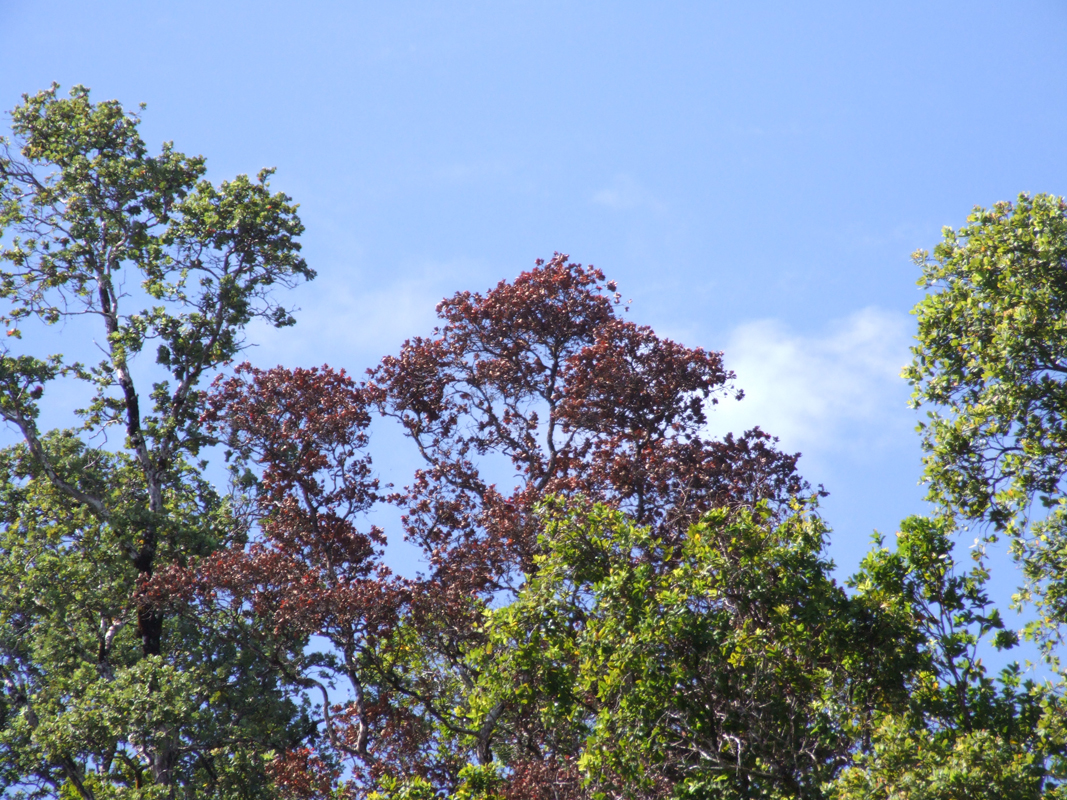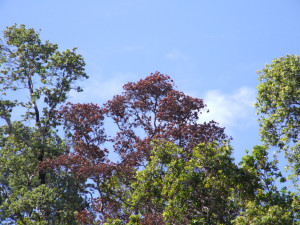The Hawai`i Board of Agriculture has approved an interim rule that is intended to prevent the spread of fungus deadly to `ohi`a from Hawai`i County to other islands in the state.
The measure, approved August 25, will take effect in early September, as soon as notice can be published in newspapers statewide and will be in effect for one year. It imposes a quarantine on the intrastate movement from the Big Island of `ohi`a plants and plant parts, including flowers, leaves, seeds, stems, twigs, cuttings, untreated wood, logs, mulch, and sawdust, except by permit. No permit conditions have been established yet, but it is likely that Department of Agriculture staff will be working to develop them in weeks and months to come.
When the Board of Agriculture’s Advisory Committee on Plants and Animals considered the rule a week earlier, it had recommended the rule also include a ban on shipments of soil (including potted plants), since the fungus, Ceratocystis fimbriata, has been found in soil as well as plant parts. However, the BOA deferred inclusion of the soil shipment ban until January 1, 2016.
Christy Martin, public information officer for the Coordinating Group on Alien Pest Species, noted that the delay in the effective date for soil quarantine “may protect the nursery industry temporarily, but without formal restrictions on the movement of dead/dying/infected `ohi`a on Hawai`i island (particularly movement to greenwaste or transfer stations), or even the movement of these materials away from infested sites, the likelihood of the fungus spreading into nurseries and across the island increases exponentially. Some of the dead trees are in yards on private property, so it is highly likely that material has already moved and has been turned into mulch or compost for use.”
As the BOA stated in its press release on the measure, “Island nurseries were concerned that a restriction on soil from Hawai`i Island would hurt agricultural businesses. Although the spores of the disease was [sic] found in soil, the delay was imposed to further research whether soil is able to transmit the disease and to develop testing protocols and treatment options for soil.” The BOA said it will be receiving updates on the risk of soil shipments at its monthly meetings and will act to ban them earlier than January, if ongoing research shows that this is necessary.
Environment Hawai`i reported on the spread of the fungus across thousands of acres of `ohi`a in our June cover article. At present, more than 15,000 acres of forested land on the Big Island is infested, and the fungus continues to spread.
J.B. Friday, with the University of Hawai`i College of Tropical Agriculture and Human Resources, manages a website that is regularly updated with news about the fungus: http://www2.ctahr.hawaii.edu/forestry/disease/ohia_wilt.html
Photo: the brown leaves at the top of an `ohi`a tree infected with Ceratocystis fimbriata. Credit: J.B. Friday



Leave a Reply